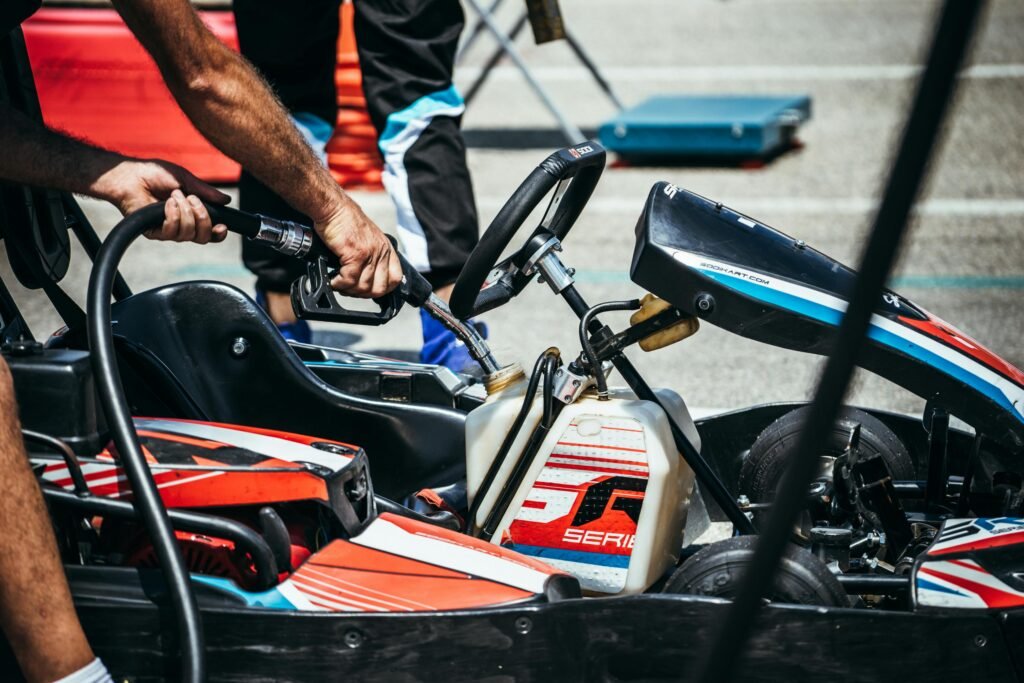Maintaining your go-kart is essential for ensuring its longevity and delivering top performance on the track. Regular maintenance not only helps avoid breakdowns but also maximizes the kart’s efficiency and safety.
Whether you’re a recreational karting enthusiast or a competitive racer, a well-maintained kart can give you the edge you need to improve lap times and overall performance.
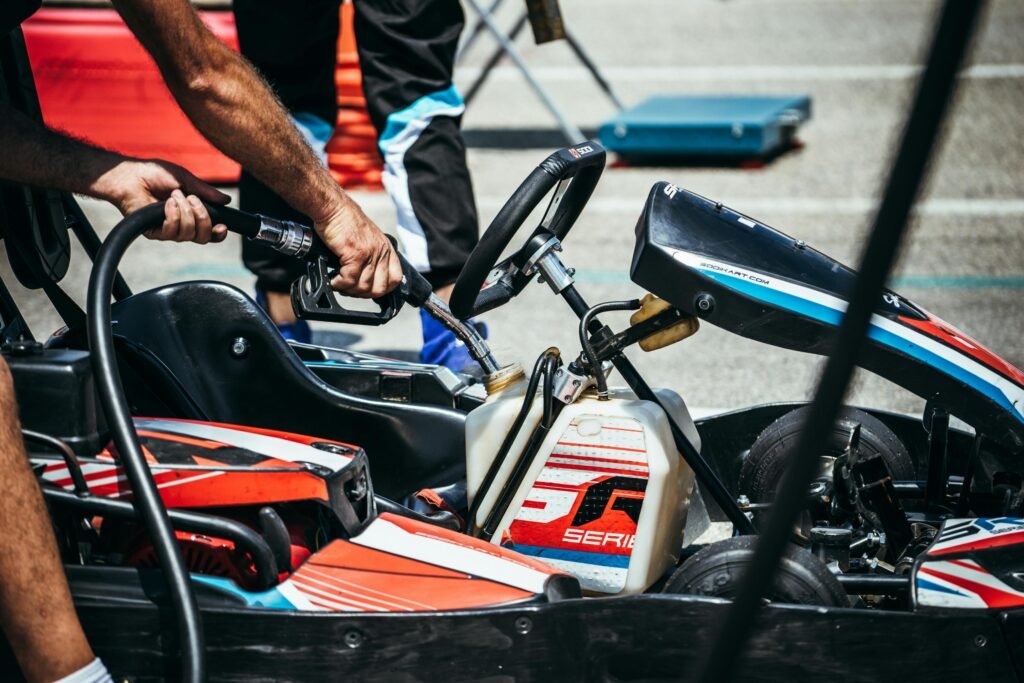
Here’s a complete guide on how to properly maintain your kart to keep it in peak condition.
1. Routine Cleaning: Keep Your Kart Dirt-Free
A clean kart is essential for easy maintenance and to spot potential issues early. After every race or karting session, it’s important to thoroughly clean your kart to remove dirt, debris, and grease that can build up and cause wear over time.
Steps for proper cleaning:
- Remove dirt and debris: Use a soft brush or compressed air to remove any dirt, dust, or grass from the kart, especially around the wheels, chassis, and engine.
- Wash with water: Use a mild detergent and water to clean the kart’s frame and bodywork. Be careful not to get water into sensitive areas like the air filter or electrical components.
- Dry thoroughly: After washing, make sure the kart is completely dry to prevent rusting, especially around metal parts.
- Lubricate: Once the kart is dry, lubricate the chain, bearings, and moving parts to prevent corrosion and ensure smooth operation.
Pro Tip: Use a degreaser for stubborn grease buildup, especially around the engine and chain. Make sure to relubricate these parts after cleaning.
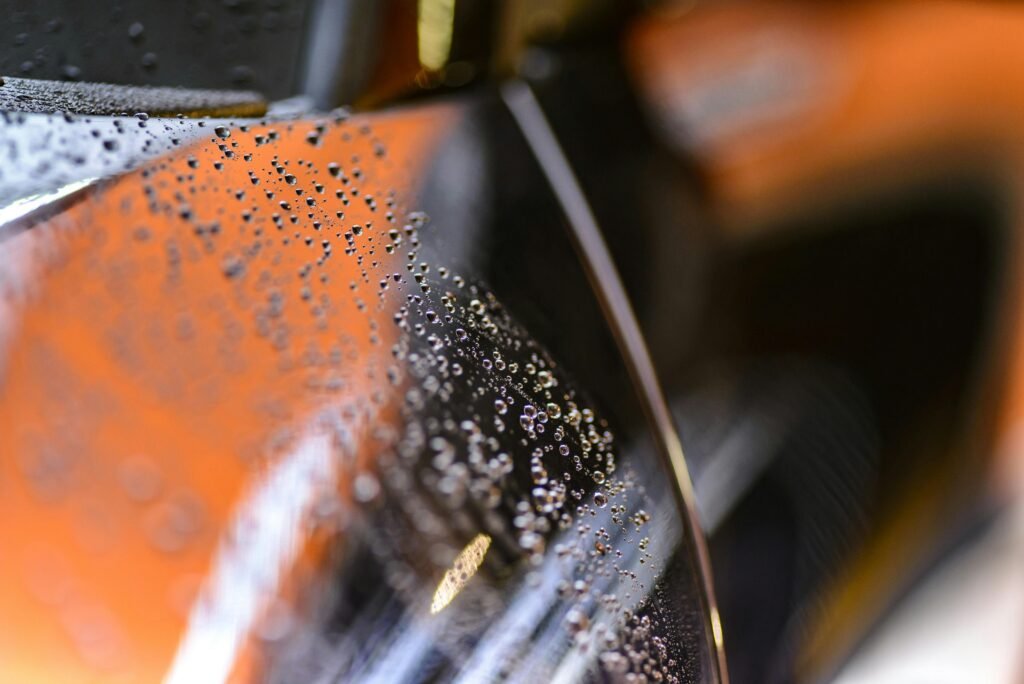
2. Check and Maintain the Engine
The engine is the heart of your kart, and keeping it well-maintained is crucial for optimal performance. Depending on whether you have a two-stroke or four-stroke engine, the maintenance requirements may vary slightly.
Key engine maintenance tasks:
- Check oil levels: For four-stroke engines, check the oil levels before and after each session. Regularly change the oil according to the manufacturer’s recommendations, typically after every 5-10 hours of use. Ensure you’re using the right oil type for your engine.
- Inspect the air filter: A clogged or dirty air filter can reduce engine performance. Clean the air filter after every session, especially if you’ve been driving on dusty or dirty tracks. Replace it as needed.
- Check the fuel system: For both two-stroke and four-stroke engines, check the fuel lines and fuel filter regularly for cracks or leaks. Replace the fuel filter if it’s dirty or worn out.
- Spark plug maintenance: Inspect the spark plug after every few races for signs of wear, fouling, or deposits. Replace it regularly to ensure smooth engine operation and easy starting.
Pro Tip: For two-stroke engines, always ensure you’re using the correct oil-to-fuel ratio as recommended by the manufacturer.

3. Inspect the Chain and Sprockets
The chain and sprockets are critical components of your kart’s drivetrain. Regular inspection and maintenance of these parts will ensure that your kart maintains smooth acceleration and avoids breakdowns on the track.
How to maintain the chain and sprockets:
- Check chain tension: The chain should have about 1-2 cm of slack. Too tight, and it can cause excessive wear on the sprockets and bearings. Too loose, and it could slip or fall off. Adjust the tension if necessary.
- Lubricate the chain: After every session, clean the chain with a chain cleaner or degreaser and then lubricate it with a high-quality chain lubricant. Avoid using standard oils that can attract dirt and debris.
- Inspect sprockets: Check the front and rear sprockets for signs of wear, such as sharp or unevenly worn teeth. Replace the sprockets if they are worn to avoid chain slipping or damage.
Pro Tip: Use a chain alignment tool to ensure that the chain and sprockets are properly aligned. This helps prevent unnecessary wear and improves the efficiency of power transfer.
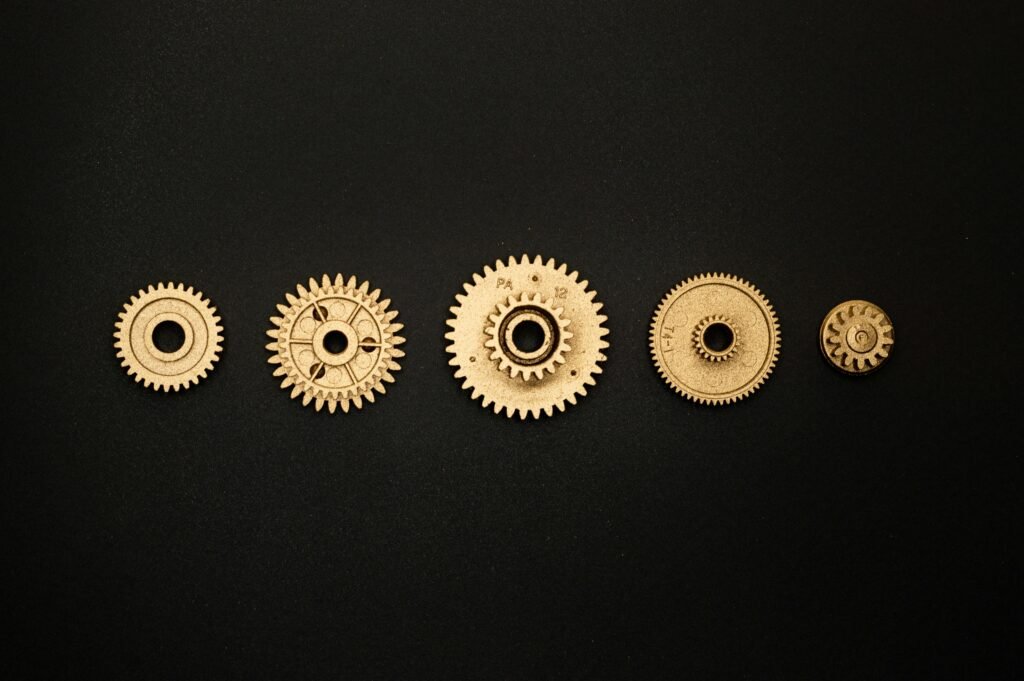
4. Tire Maintenance: Ensure Proper Grip and Performance
Tires are critical to a kart’s handling and overall performance. Maintaining your tires will improve traction, cornering, and braking.
How to maintain your tires:
- Check tire pressure: Tire pressure directly affects grip and handling. Always check tire pressure before every session. The correct pressure depends on the track conditions and the type of tires you’re using (slicks, rain tires, etc.). Overinflated tires reduce grip, while underinflated tires can cause poor handling and increased wear.
- Inspect tire wear: Regularly inspect your tires for wear patterns. Uneven wear may indicate alignment or suspension issues. If your tires are worn past the tread indicators, it’s time to replace them.
- Rotate tires: To ensure even wear, rotate your tires periodically, especially if you notice more wear on the rear tires due to increased acceleration forces.
- Clean your tires: After each session, clean the tires to remove dirt and debris. This can help prolong their life and maintain grip on the track.
Pro Tip: Monitor track temperatures and conditions, and adjust tire pressures accordingly to optimize performance.
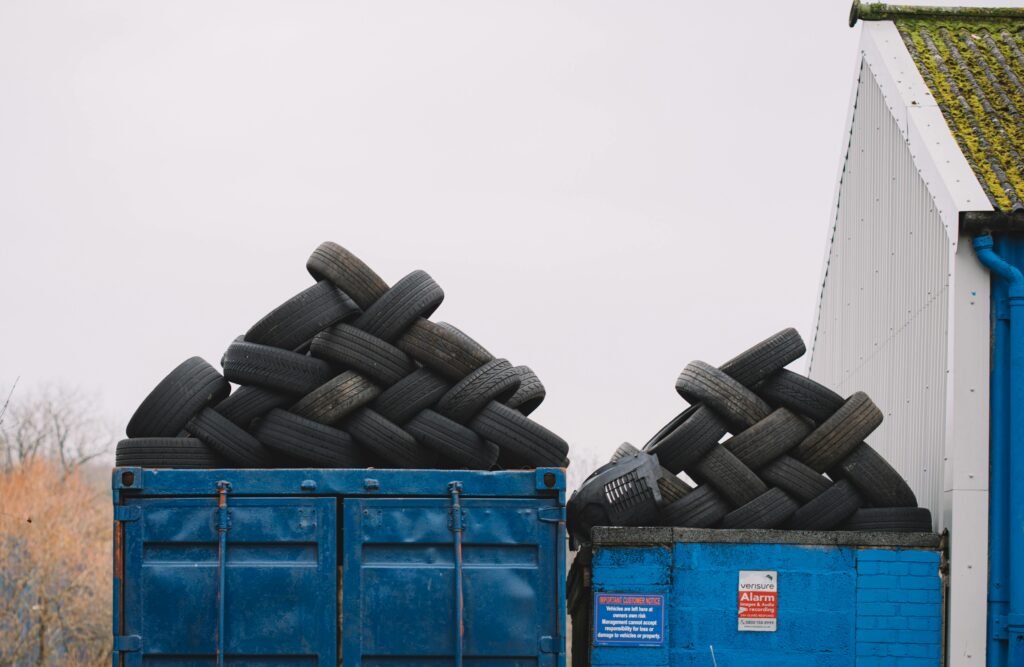
5. Brake System Maintenance
A well-maintained braking system is essential for both safety and performance. Karting involves a lot of sharp turns and heavy braking, so keeping your brake system in top shape is crucial.
How to maintain your brakes:
- Inspect brake pads: Check your brake pads for wear after every session. Worn-out pads can significantly reduce braking performance. Replace them if they’re too thin or if you notice reduced stopping power.
- Check brake fluid: Brake fluid needs to be maintained at the correct level. Check the fluid reservoir regularly and top it off if necessary. Also, change the brake fluid periodically (every few months) to maintain braking efficiency, especially if you notice sponginess in the brake pedal.
- Inspect brake lines: Look for any cracks, leaks, or wear in the brake lines. Any signs of damage should be addressed immediately, as they can lead to brake failure.
Pro Tip: Always use the type of brake fluid recommended by the manufacturer to ensure compatibility and proper performance.
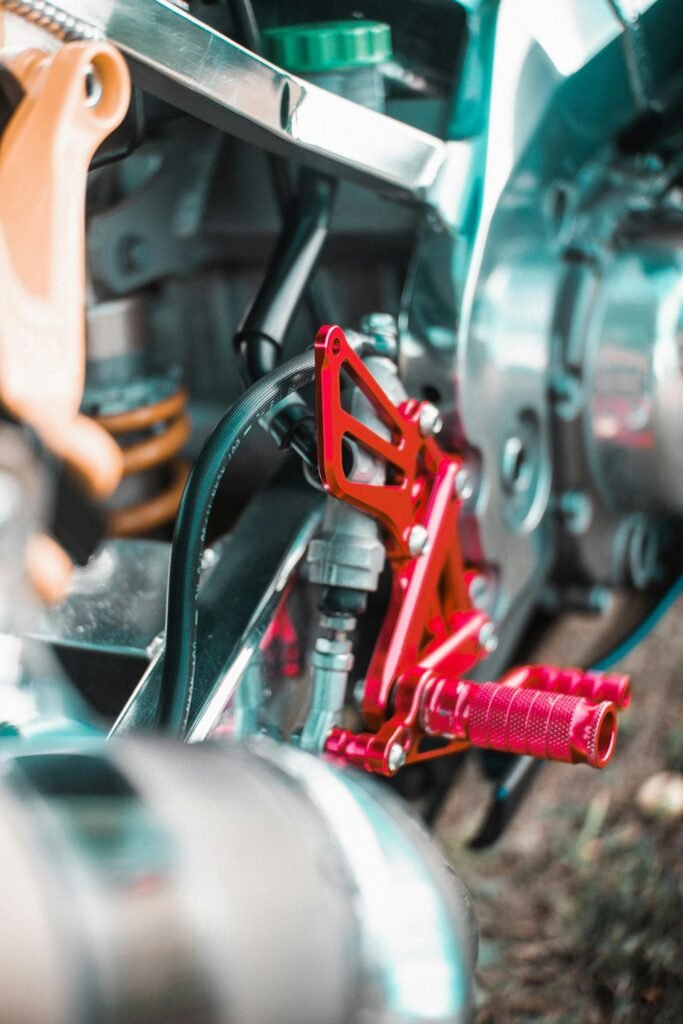
6. Steering and Alignment
Proper steering and alignment are critical for maintaining control and handling during races. Misalignment or stiff steering can cause issues with cornering and overall performance.
How to maintain steering and alignment:
- Check for play in the steering: There should be no excessive play in the steering wheel. If there is, inspect the steering column, tie rods, and steering arms for wear or looseness.
- Inspect the tie rods and steering components: Look for any bends, cracks, or signs of wear in the tie rods and steering rack. Ensure that all nuts and bolts are securely fastened.
- Align the front wheels: Proper wheel alignment is essential for smooth handling and better lap times. The front wheels should have a slight toe-in (typically 1-2mm). Use an alignment tool to check the toe angle regularly.
Pro Tip: Periodically lubricate steering joints and bearings to keep the steering smooth and responsive.
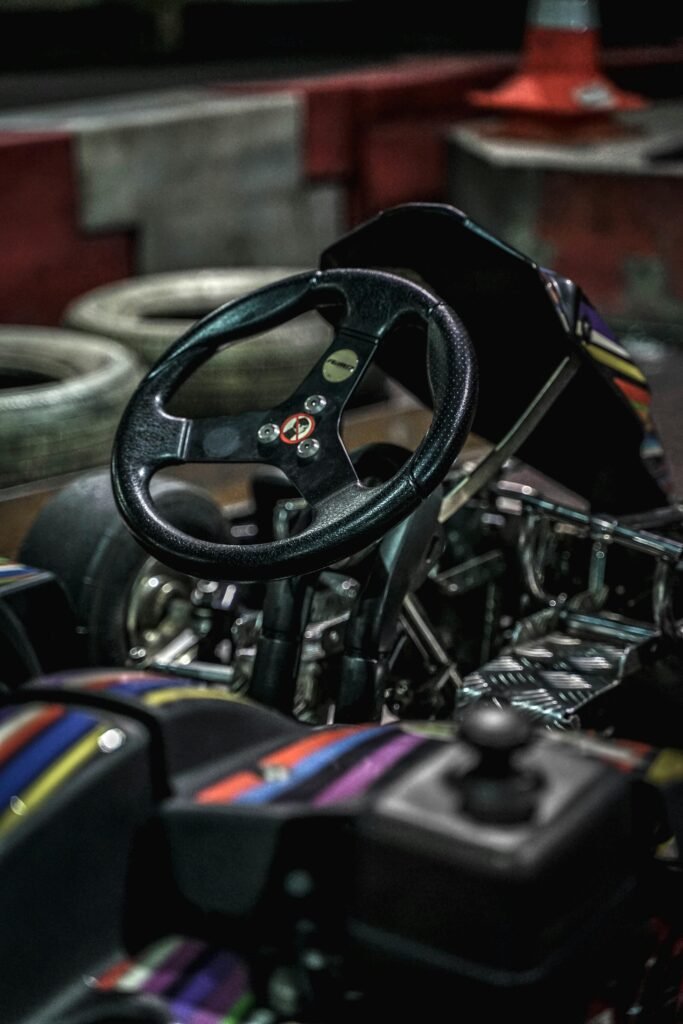
7. Chassis and Frame Inspection
The chassis and frame endure the most stress during karting, especially in competitive racing where karts are subject to high-speed impacts and cornering forces.
How to maintain the chassis and frame:
- Check for cracks or damage: After every session, inspect the chassis for cracks, dents, or signs of bending. Even minor damage can affect handling and performance.
- Tighten bolts and fasteners: Go through your kart’s frame and make sure all bolts, nuts, and fasteners are tight. Vibrations during racing can cause them to loosen over time.
- Check seat positioning: Ensure the seat is securely fastened and properly positioned for your driving comfort and weight distribution. Incorrect seat positioning can impact the kart’s handling.
Pro Tip: If you notice any significant damage to the chassis, consider getting it professionally repaired to maintain structural integrity.
8. Suspension and Bearings
Even though most karts have limited suspension systems, maintaining any suspension components (if applicable) and wheel bearings is important for smooth handling and performance.

How to maintain the suspension and bearings:
- Inspect bearings: Wheel bearings should be smooth and free of any grinding or resistance. If you notice any stiffness, noise, or roughness, clean and lubricate the bearings or replace them if necessary.
- Check axle and hubs: Ensure that the rear axle and wheel hubs are straight and free of damage. Bent axles or misaligned hubs can significantly affect handling and tire wear.
Pro Tip: Use high-quality bearing grease for lubricating wheel bearings. Regularly clean the bearings to remove dirt and ensure smooth rotation.
9. Fuel System Maintenance
Keeping your fuel system clean and functioning properly ensures that your engine runs smoothly and efficiently.
How to maintain the fuel system:
- Use fresh fuel: Always use fresh, high-quality fuel. Stale fuel can cause engine misfires and reduce performance.
- Clean the fuel tank: Periodically empty and clean the fuel tank to remove debris or residue that could clog the fuel system.
- Inspect fuel lines: Check fuel lines for cracks, leaks, or brittleness. Replace damaged lines immediately to prevent fuel leakage.
Pro Tip: If your kart will be stored for an extended period, drain the fuel tank and carburetor to prevent fuel degradation and clogging.
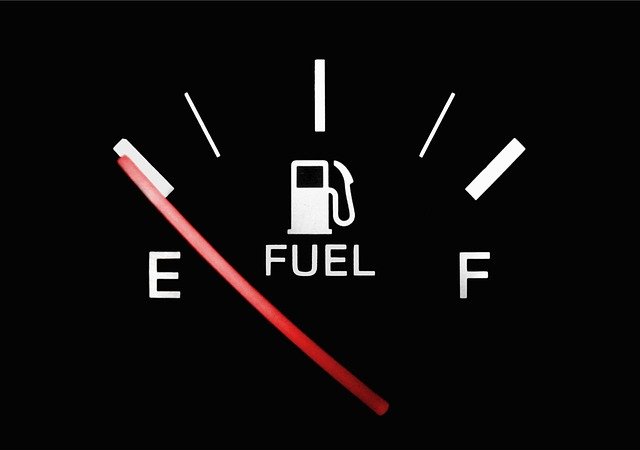
Consistent Maintenance for Peak Performance
Regular and thorough maintenance of your go-kart is key to ensuring that it performs at its best every time you hit the track. By focusing on routine cleaning, inspecting essential components like the engine, brakes, tires, and steering, and making necessary adjustments, you can prevent breakdowns, improve handling, and boost your overall racing performance.
Make kart maintenance part of your regular routine to keep your machine running smoothly and efficiently for every race!

